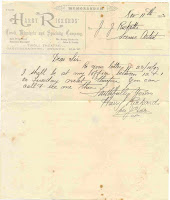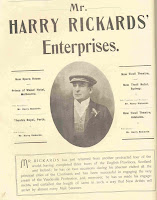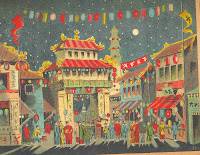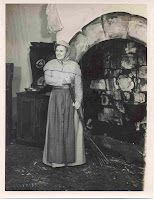Below is a letter dated 1893 on Harry Rickards' stationery. I'm not sure if it's signed by Rickards or by his brother Jack Leete. The Tivoli circuit was a family affair and Jack managed a lot of the business side.

This is a picture of Harry Rickards from an early 20th Century magazine. It outlines all the theatres he operated in Australia. These included the Tivoli in Sydney, The Opera House in Melbourne, and theatres in Adelaide and Brisbane. As you can see, Rickards had no problem with self promotion.
 Finally, below is a 19th Century postcard of the New Opera House in Melbourne. It was later called the Tivoli and was run by Rickards. A shopping mall now stands on the site.
Finally, below is a 19th Century postcard of the New Opera House in Melbourne. It was later called the Tivoli and was run by Rickards. A shopping mall now stands on the site.Frank Van Straten's book on the Tivoli called Tivoli, covers everything you want to know about the history of this legendary theatre chain.










 Winfred's father was a pharmacist and she was supposed to follow the family path, but she was lured by music and succumbed to its siren song.
Winfred's father was a pharmacist and she was supposed to follow the family path, but she was lured by music and succumbed to its siren song.
 She was brought to Australia by Harry Rickards, of the Tivoli Circuit in 1906. Her Manager, Fred Melville, accompanied her.
She was brought to Australia by Harry Rickards, of the Tivoli Circuit in 1906. Her Manager, Fred Melville, accompanied her.
